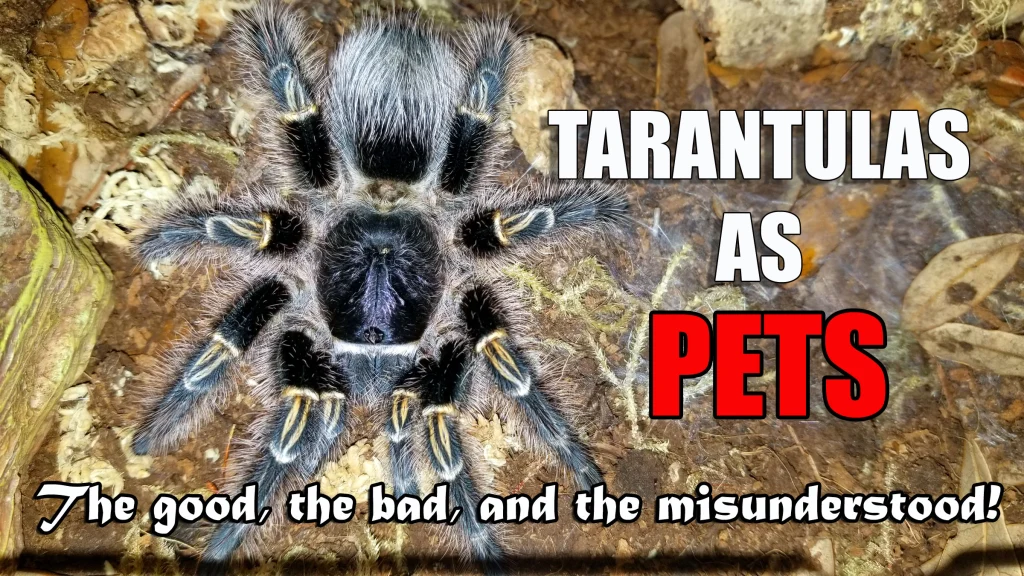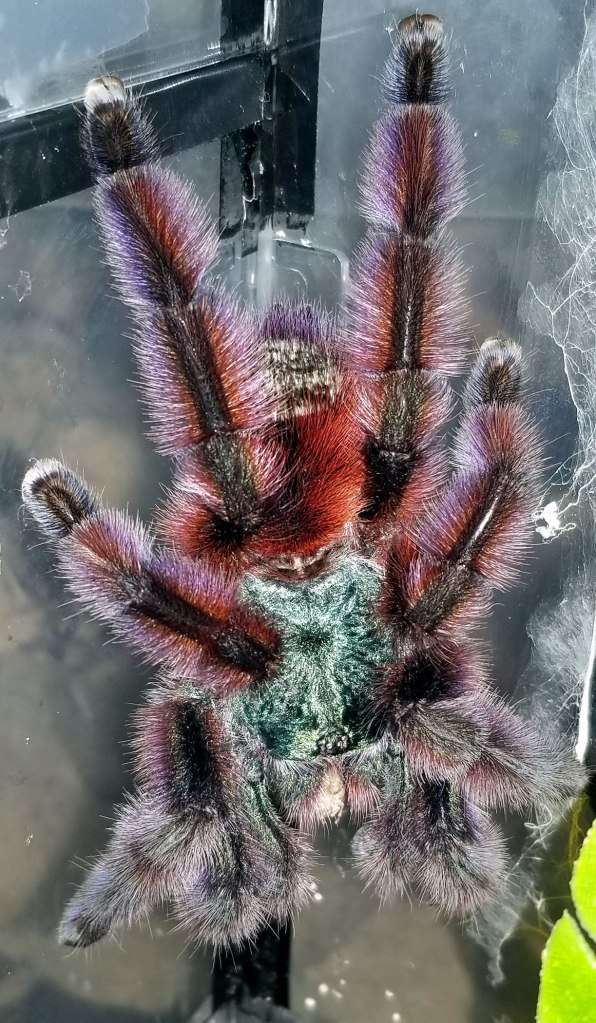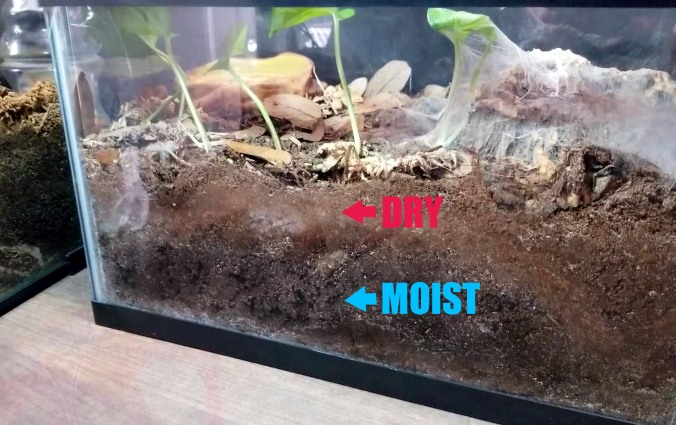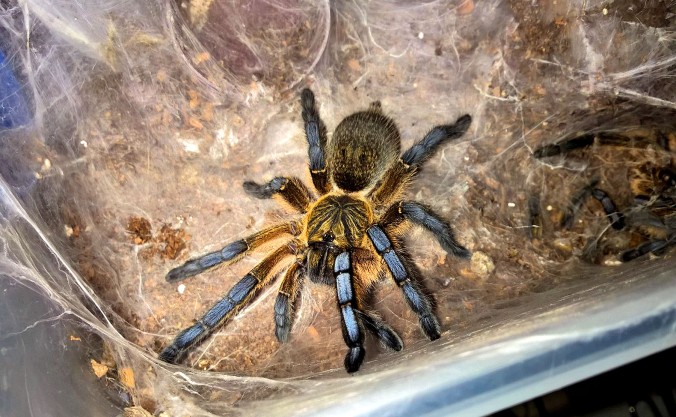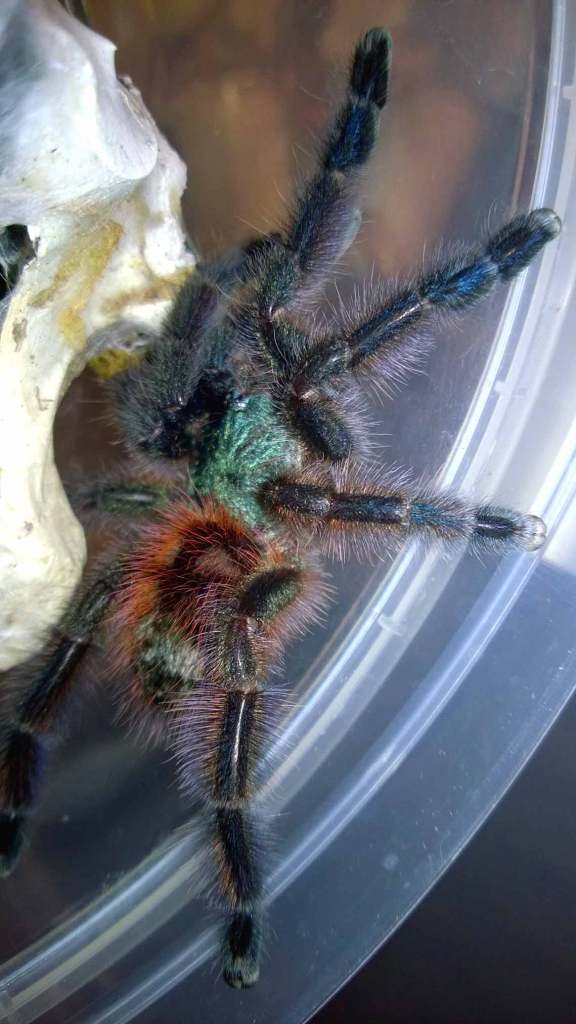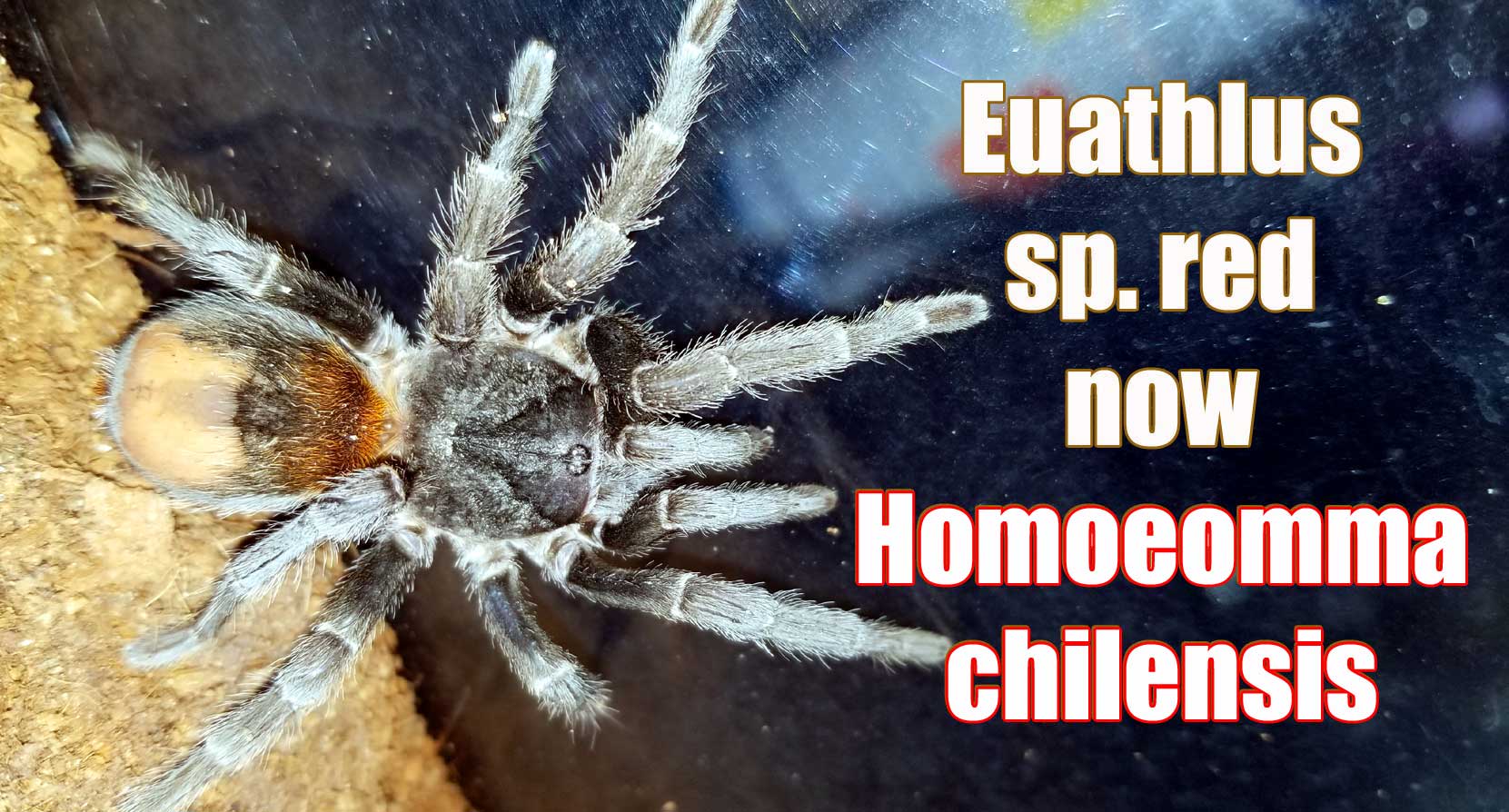A Comparison for the Potential Hobbyist

Back in the 90s when I was more into keeping snakes than tarantulas, my wife, Billie, and I attended a reptile expo in Massachusetts. While perusing the animals at the various tables, we saw a 10-gallon aquarium with about two inches of colorful aquarium gravel and a large black tarantula stood dead in the middle of it. It was easy to surmise that this spider was NOT happy, as it had its front legs raised high into the air and it would slap the ground every time a curious individual got too close to the tank. Although I did have two tarantulas at this time, I was still quite intimidated by them, and I found this threat display to be equally fascinating and terrifying. The cage was labeled simply, “Thailand Black Tarantula”, and I gave serious thought to purchasing the poor girl as she looked so stressed. I remember telling Billie, “their bites are no worse than a bee sting” so it wouldn’t really be dangerous to keep it.
What I didn’t know at the time was that this species was an Old World tarantula, and a bite from one would be a heck of a lot worse than a bee sting. I also had no idea that this was a shy, burrowing species, and the threat display was not due to the spider being “aggressive”, but because the setup was woefully inappropriate for it.
My experience was definitely not a unique one, as people first discovering the hobby are often confused to hear hobbyists discussing two different groups of tarantulas; New World and Old World. Luckily, a little research will reveal the main reason for the delineation between the two.
The simple explanation is that New World tarantulas are found in the western hemisphere and include Theraphosidae from North and South America and the surrounding islands. This includes species from the US, Mexico, all of South America, and the Caribbean islands.
Old World tarantulas, on the other hand, are found in the Eastern continents including Asia, Africa, Australia, and Europe.
Simple, right?
Now, being separated by an ocean isn’t the only difference in these two types of tarantulas. Anyone doing proper research will quickly hear New World spiders being described as calm, visible, and reluctant to bite. Even better, if they do happen to nip, their bites have been described as little more than “bee stings.”
Conversely, they will also discover that Old World spiders have been stigmatized for being potentially dangerous to the point where new hobbyists showing interest in these more “advanced” species are admonished by experienced keepers for even considering keeping them. For some, these more defensive spiders serve as a way to show off how brave one is for keeping such a fearsome creature. For others, stories about painful bites and aggressive behavior have completely turned them off to the idea of ever keeping one of these spiders.
Although there are absolutely key differences between New World and Old World species that all keepers need to be aware of, much that is made about these differences can be over exaggerated. With that in mind, let’s examine the major variances in these two types of spiders in terms of behavior and means of defense.
Continue reading